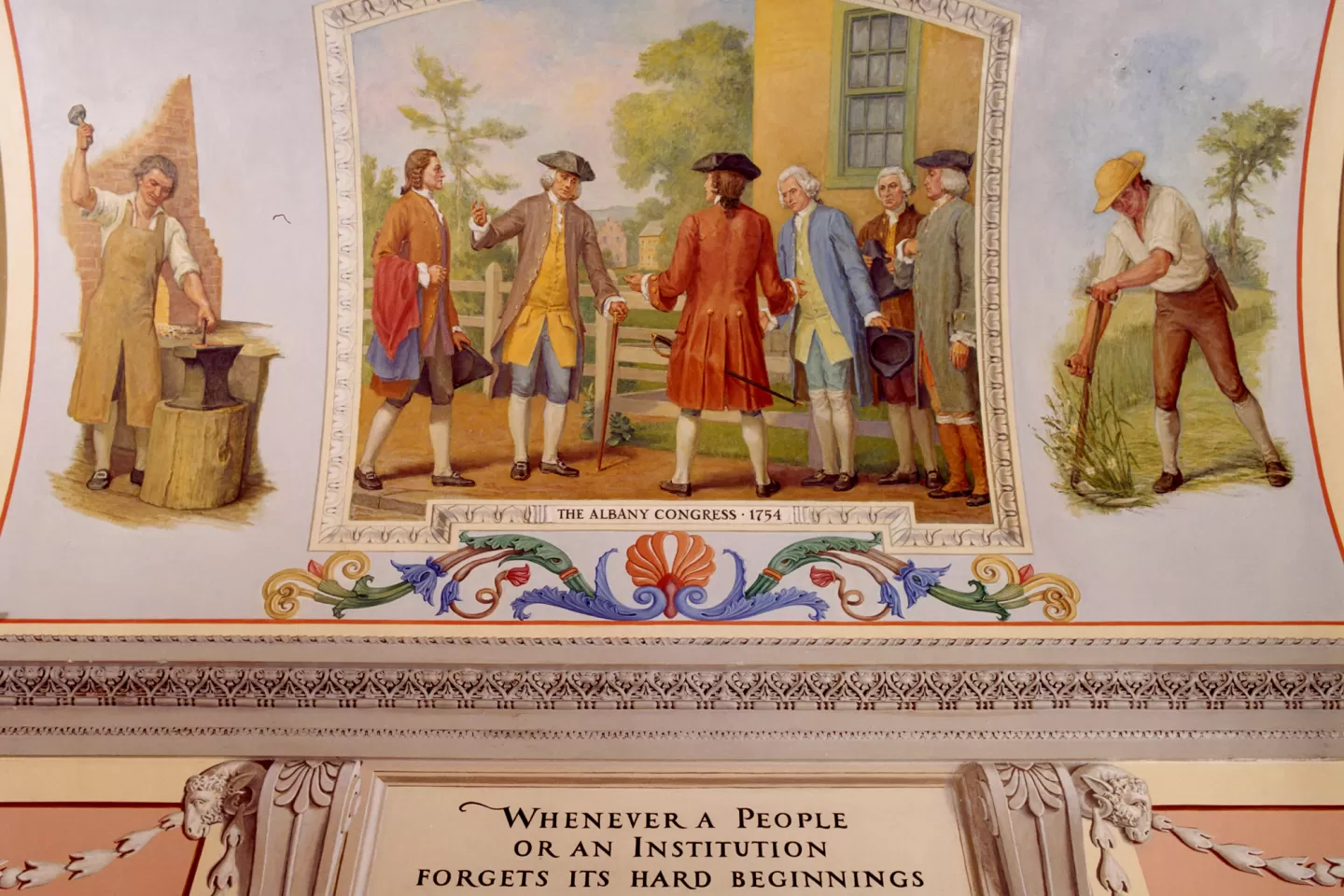In 1754 the British government asked colonial representatives to meet in Albany, New York, to develop a treaty with Native Americans and plan the defense of the colonies against France. Exceeding these limited objectives, the assembly adopted a plan developed by Benjamin Franklin for government of the colonies by a central executive and a council of delegates. Although rejected by England and the colonies, the Albany Plan became a useful guide in the years leading up to the Revolutionary War. The mural depicts some of the delegates (from left to right): William Franklin and his father, Benjamin (Pennsylvania); Governor Thomas Hutchinson (Massachusetts); Governor William Delancey (New York); Sir William Johnson (Massachusetts); Colonel Benjamin Tasker (Maryland).
Left: The blacksmith symbolizes the importance of iron-working in the mid-18th century.
Right: The farmer with his scythe represents the growth of agriculture in the colonies.
About the Cox Corridors Murals
The first floor of the U.S. Capitol's House wing is elaborately decorated with wall and ceiling murals by artist Allyn Cox. The central east-west corridor is referred to as the Great Experiment Hall because it chronicles in 16 murals the legislative milestones of three centuries, from the signing of the Mayflower Compact in 1629 to the enactment of women's suffrage in 1920.
